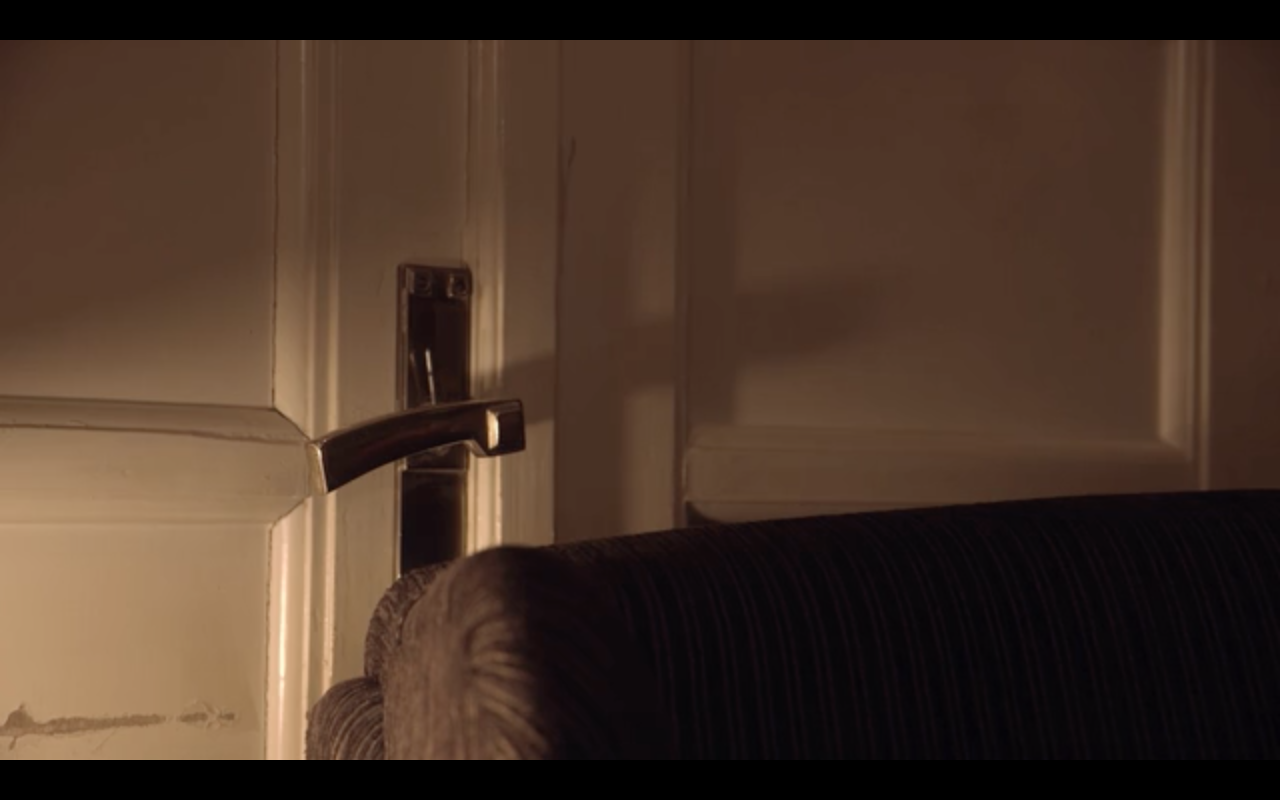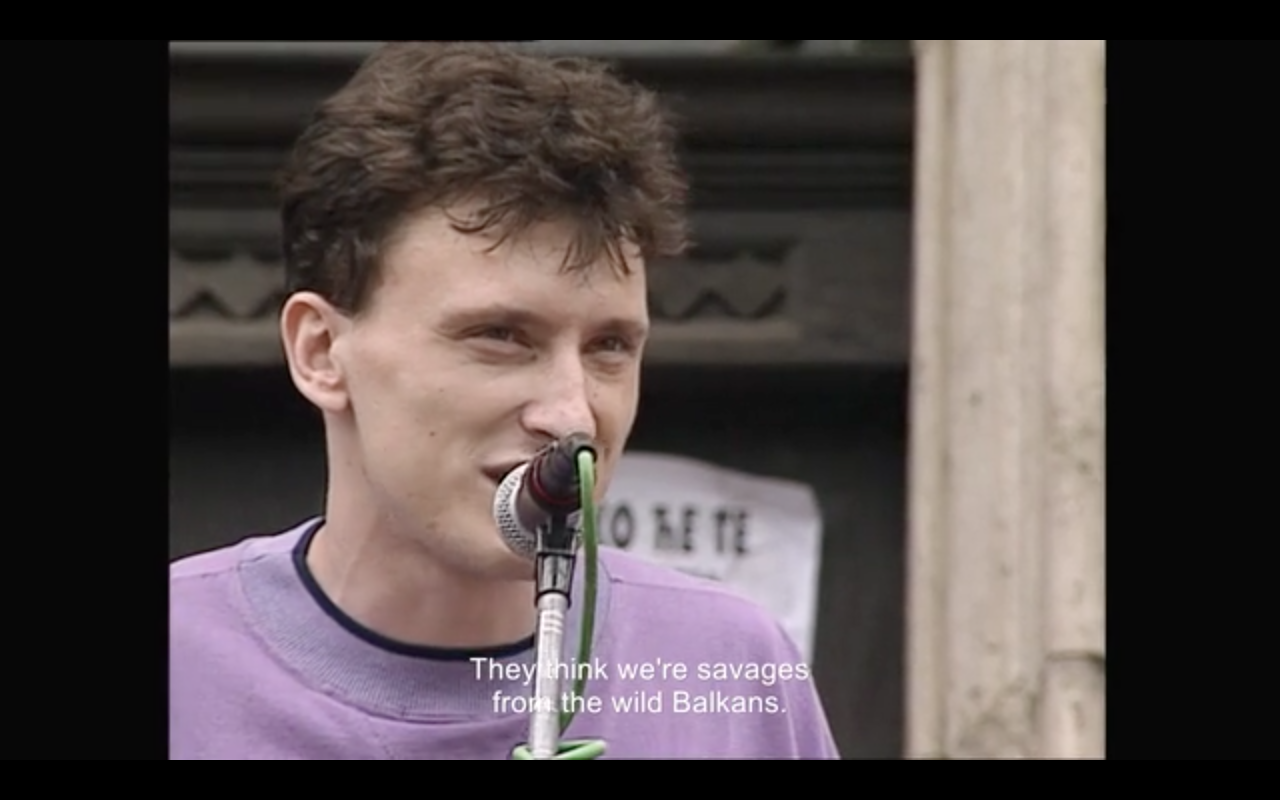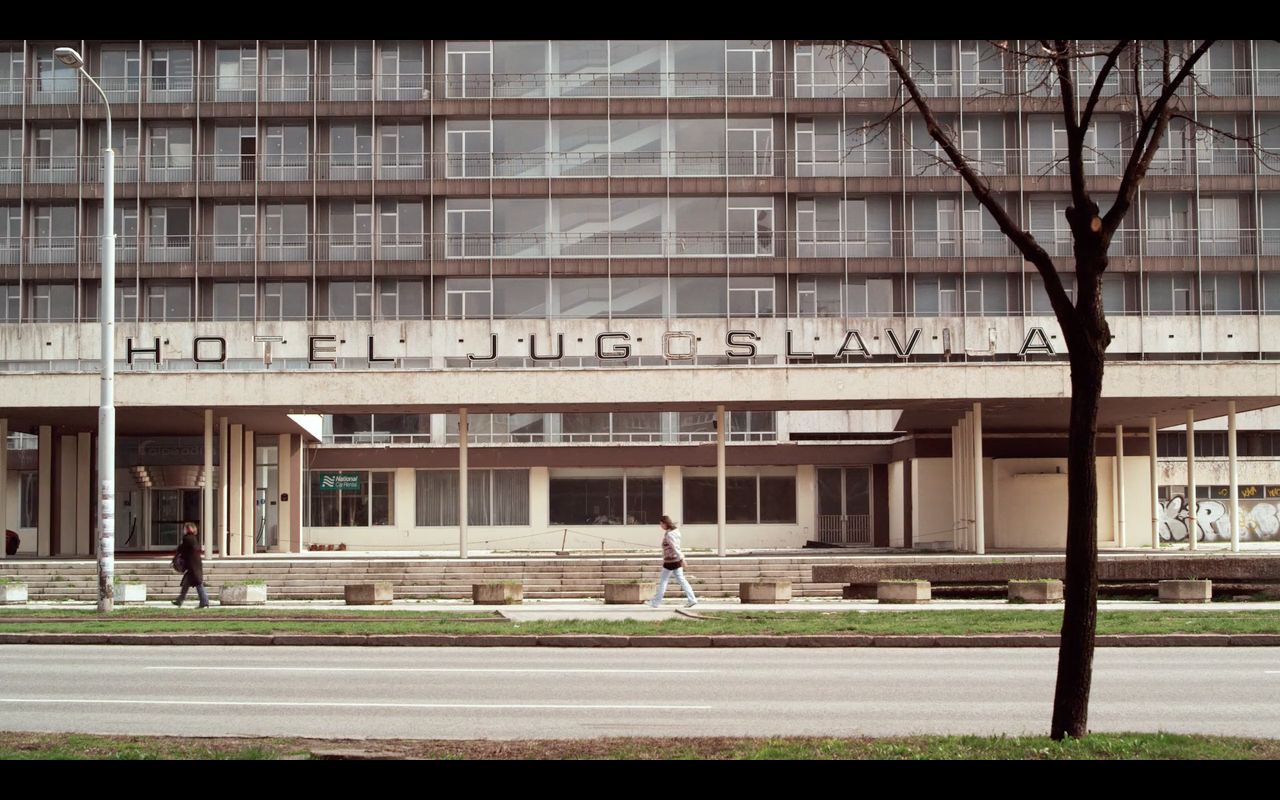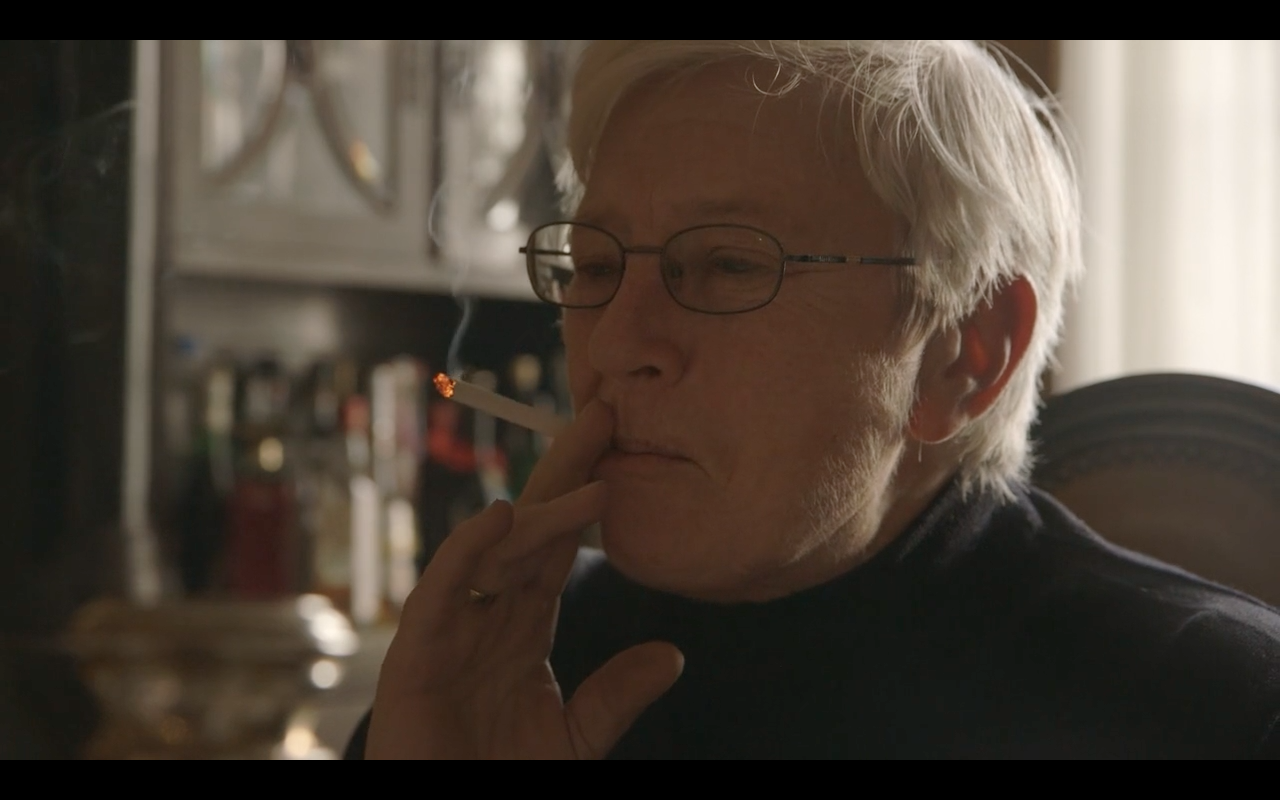“I think I preferred our apartment with the door closed.” — mumbles Srbijanka Turajlić (1946-) at the end of the documentary The Other Side of Everyting (2017). After the Second World War the Communist regime was installed under Josip Broz Tito. Due to the collectivization of private property under communism, the apartment of the bourgeois family in which Srbijanka grew up was split in two. One part was to be inhabited by a ‘proletarian’ family, the other would remain for the Turajlić’s. The doors between them were locked and remained locked until the end of the documentary. At this point, Srbijanka’s response to opening the door that leads to the other side of apartment is not surprising. “Nobody is thinking about the future, all we do is fight each other to rewrite the past and we’re paying the price for that.” — she utters frustrated in a previous sequence, while blowing out a long stream of cigarette smoke. Opening the doors between the two apartments means barging into a history of which the coals are still smoldering.
The apartment in Belgrade that is the setting of the entire documentary, has been marked by the history of Yugoslavia, and its fall during the Balkan wars. Just like its inhabitant, Srbijanka Turajlić. A well known Serbian political activist, founding member of the Otpor! movement, former professor at the University of Belgrade, she is also the mother of Mila Turajlić, the director of The Other Side of Everything. The documentary gives the stage to the stories of the activist-professor, whom dedicated her life to the struggle for a free and democratic Yugoslavia. After the revolution of October 5th 2000, when Sloboan Milošević was thrown out of the Serbian government, she also held a post in parliament as minister of Education. As audiences we follow Mila’s portrayal of her mother in the apartment, where every object seems to have a story: “I guess people held in their homes little pieces of history”. We as audiences are witnessing the witness giving testimony to her own personal history and that of her country, Serbia.

The closed door in the Turajlić appartement.
“You cannot say you didn’t know”
For some months now I am following my internship at the Cineteca di Bologna, selecting films for Human Rights Nights Film Festival. Among the program will be many documentaries, and a lot of them make use of witnessing. That is to say, they give us a close and personal account of individuals in a particular situation that has often been marked by exile, poverty, violence, war, conflict, abuse, oppression, struggle, or reflects on a history of one those. For myself I can say some documentaries made me feel I was a sort of secondary witness, they made me feel uncomfortable, complicit even. Indeed these documentaries have an impact because they tell you that “you cannot say you didn’t know”. This type of audiovisual storytelling — done right of course — does something other than newspapers, the six o’ clock news, or digital media do: it sucks you into an individual’s perspective on things, and you can only watch how things unfold. Now I can say: “I know how it is to be you.”
Or do I?
John Peters states in his book Witnessing, Media, Culture and Society (2001) although ‘words can be exchanged, experiences cannot.’ Indeed, no transfusion of consciousness is possible for human beings. (Frosh 2006: 267). This is where I am split: I want to believe documentaries have an impact on people, change their behavior, but the fact is that sometimes I feel it doesn’t. This bugs me. We never seem to learn from the past — or at least some would say so. I would like to meditate on what effect storytelling as a from of testimony can have in todays world. Apart from the news we read and watch, our present day-and-age has become swamped with digital media, and so they create fragments of information, images and sounds. We are perpetually confronted with the pain of others through reports — off- as well as online. We are exposed to so much of these bits of information, that in a digital vertigo nothing seems to be able to really reach us, meaning we lack an ethical response towards injustices. It’s ironic: the more we know, the less we seem to be affected.

Historic images of a student protest in Belgrade (The Other Side of Everything).
Storytelling
Walter Benjamin had already asked himself a similar question with regard to the introduction of mass society’s means of communicating: the newspaper. ‘Every morning brings us the news of the globe and yet we are poor in noteworthy stories.’ — he wrote in ‘The Storyteller’ an essay on the works of Nicolai Leskov. Benjamin seemed to have a similar issue with mass communication, since it lacked the practical knowledge storytelling offered. But also embraced his era, and saw opportunities. We have to adapt. Audiovisual technology, such as film or podcasts, could perhaps ‘revive’ storytelling. By means of storytelling, conveying not only knowledge about a state of affairs such as newspapers or digital media do, but also on how to respond to them as a practical knowledge, we could create a possibility of identifying with strangers and their struggles. This is exactly what The Other Side of Everything does: it offers a way to “make human” the lives of strangers having suffered and struggled. In the process, we learn about a history of repression and war, but we do so through a personal story. In this way, not only knowledge is conveyed, but a moral snare is strung as well. The stranger is recognized as someone, and we realize actions have a history, and history has a face! In this way, the audience will be reached, so to say, when Turajlić recounts her version of the events: “The West didn’t care about supporting democracy in Serbia. Since the end of the war in Bosnia, the West supported Milošević as the ‘guarantor of peace in the Balkans.’ And then at one moment, they decided that he was ‘the butcher of the Balkans’. And that was when the NATO bombing of Serbia began.”
Can documentary storytelling close the gap between a witness and the audience? As we learned from Peters: no it cannot. But it can give us — the audience — a sense of what we are made to witness, through storytelling: a personal history bound to a larger one. Even though that doesn’t makes us join the Red Cross or Amnesty immediately, it does habituates us to the perspective of someone else, to indeed, the other side of everything. It habituates us to strangeness, that, while following their gaze, connects them to us through the moving image. Such marvel, cinema! Hotel Jugoslavija, another beautiful documentary released last year by Nicolas Wagnières, shows that the storytelling doesn’t even have to be done by a person. Here a former grand hotel in Belgrade is portrayed throughout its history, and we review its traces. The building tells its story as a place for national Yugoslavian pride receiving statesmen, to its degradation into a shady hang-out for criminals as a casino that followed soon after Tito’s death and the ascend of Milošević. Finally we are told of its destruction by bombing in the war with Bosnia.

Hotel Jugosalvija (2017).
Will freedom sing as beautifully as the oppressed sang about it?
“I feel like an old warrior in your story.” — Srbijanka tells her daughter. Mila admires her mother’s activism. She however doesn’t feel that she has the courage to stand up as her mother once did. “Are you going to change things?” — she asks. “No, I’m too old. I expect you to do it. I wanted you to hold a speech instead of me. If anyone is going to change things it will have to be your generation. Not me.” The story is always the same, and unfortunately Serbia is no different: Mila is now living in France, stating she doesn’t want to live in her homeland. Her mother agrees. ‘Will freedom sing as beautifully as the oppressed sang about it?’ It is a line from a famous poem that was cited in one of the newspapers after the revolution of October 5th. If we listen to the story of Srbijanka Turajlić and her daughter’s documentary, Serbians will have to continue to struggle.
Melle van Maanen
References
Benjamin, Walter. (1936). ‘The Storyteller: Reflections of the Works of Nicolai Leskov’ in: Illuminations. Edited by Hannah Ahrendt, translated by Harry Zorn. London: Pimlico, pp. 83-107.
Frosh, Paul. (2006). ‘Telling Presences: Witnessing, Mass Media, and the Imagined Lives of Strangers’ in: Critical Studies in Media Communication 23:4, p. 265-284.
